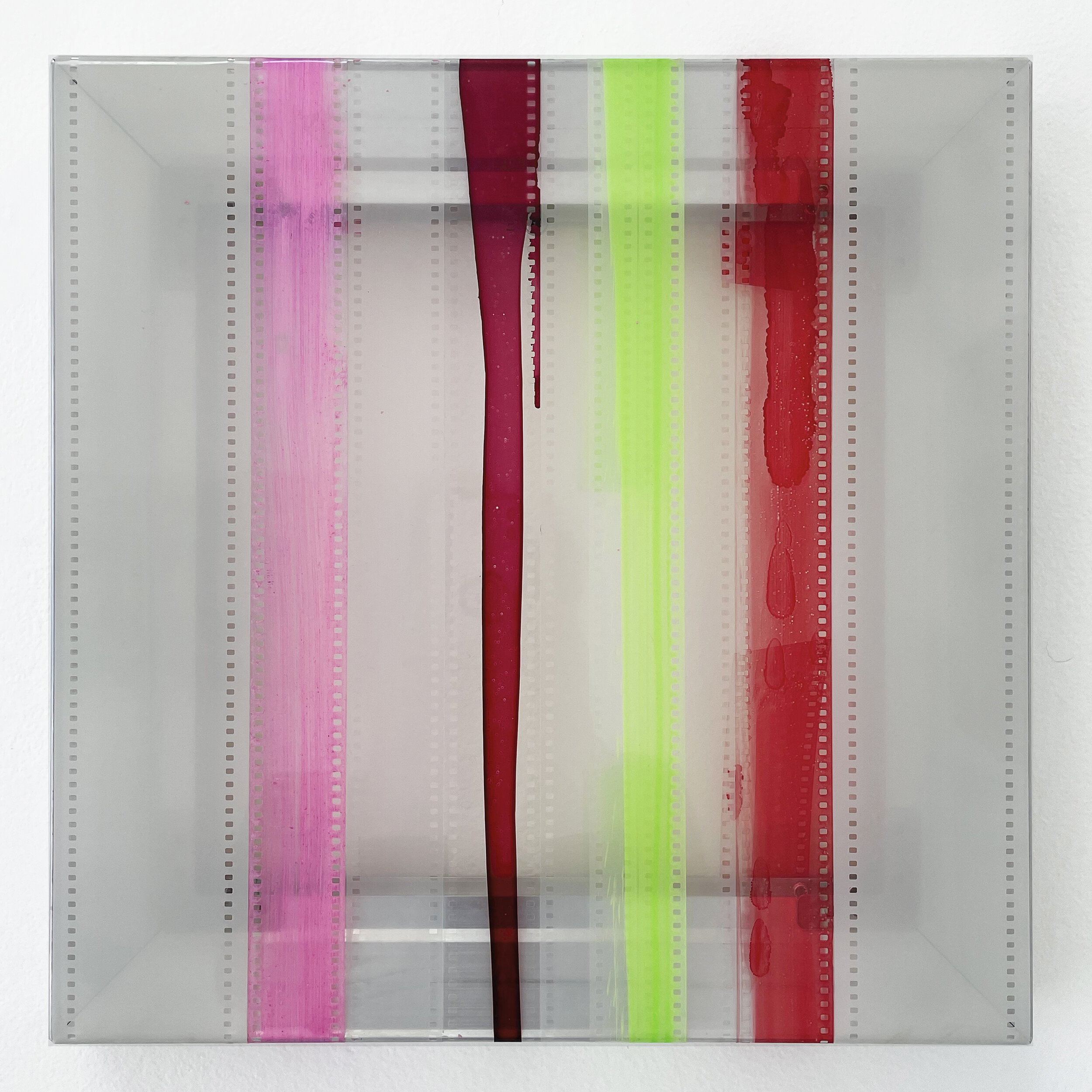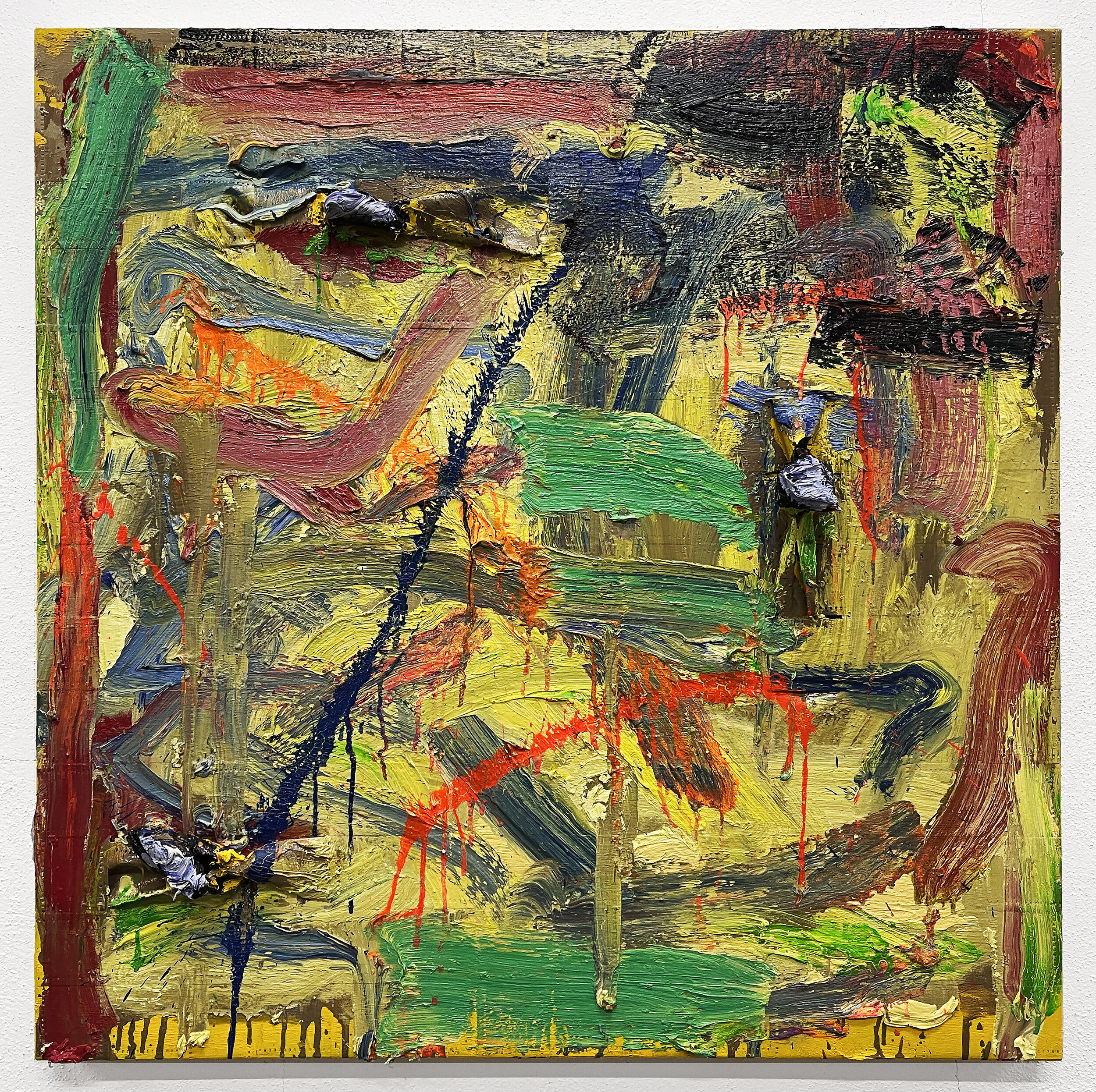Carter Potter was born in Los Angeles, CA. He earned a BA in 1987 and an MFA in 1990, both from UCLA. Although primarily a painter, his work also takes in a range of found objects and materials, most notably movie film. A reflection on the southland’s most emblematic industry, it is also one with which Carter has firsthand experience, having worked for some years as a production assistant at a computer animation firm (where he first encountered the scrap film that he would go on to utilize in his painting practice), at a traditional ink and paint animation firm, and ultimately, years later, as an assistant producer on many live-action films, both for television and for theatrical release.
Carter has exhibited widely throughout the US and Europe, with solo exhibitions at Angles Gallery in Santa Monica, Julie Saul Gallery and Jose Frière Fine Art, both in New York City; Rocket in London, England; Galerie H. S. Steinek in Vienna, Austria; and Sue Spaid Fine Art in Los Angeles.
Selected group exhibitions include LACE, Margo Leavin Gallery, MOCA, ACME, all in Los Angeles; The Albright-Knox Gallery, Buffalo, New York; The Corcoran Gallery of Art, Washington, D.C.; Kerlin Gallery, Dublin, Ireland; Kunsthalle Lophem, Bruges, Belgium; amongst others. Permanent Collections include The Panza Collection in Varese, Italy; The Museum of Modern Art, Stiftung Ludwig (mumok), Vienna, Austria; The Addison Gallery of American Art, Phillips Academy, Andover, Massachusetts; The Santa Barbara Museum of Art, Santa Barbara, California and The Orange County Museum of Art, Newport Beach, California.
Carter’s work has been featured in the Los Angeles Times, The Washington Post, Art in America,The New York Times, Der Standard, Die Presse, Newsweek, Artweek, Art News, Art Issues, Artforum, Frieze, Modern Painters and Artnet amongst others.
Potter lives and works in Los Angeles.
WORKS
“With a nod to the industry that dominates his native Los Angeles, Carter Potter creates minimalist compositions, which he calls “paintings,” out of discarded strips of film. He approaches his work with a sense of irony and awareness of the perceived obsolescence of both painting and film in the digital age, claiming that he is “using the bones of cinema to build the velvet coffin of painting.”










